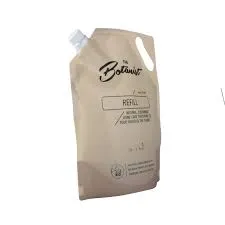- Afrikaans
- Albanian
- Amharic
- Arabic
- Armenian
- Azerbaijani
- Basque
- Belarusian
- Bengali
- Bosnian
- Bulgarian
- Catalan
- Cebuano
- chinese_simplified
- chinese_traditional
- Corsican
- Croatian
- Czech
- Danish
- Dutch
- English
- Esperanto
- Estonian
- Finnish
- French
- Frisian
- Galician
- Georgian
- German
- Greek
- Gujarati
- haitian_creole
- hausa
- hawaiian
- Hebrew
- Hindi
- Miao
- Hungarian
- Icelandic
- igbo
- Indonesian
- irish
- Italian
- Japanese
- Javanese
- Kannada
- kazakh
- Khmer
- Rwandese
- Korean
- Kurdish
- Kyrgyz
- Lao
- Latin
- Latvian
- Lithuanian
- Luxembourgish
- Macedonian
- Malgashi
- Malay
- Malayalam
- Maltese
- Maori
- Marathi
- Mongolian
- Myanmar
- Nepali
- Norwegian
- Norwegian
- Occitan
- Pashto
- Persian
- Polish
- Portuguese
- Punjabi
- Romanian
- Russian
- Samoan
- scottish-gaelic
- Serbian
- Sesotho
- Shona
- Sindhi
- Sinhala
- Slovak
- Slovenian
- Somali
- Spanish
- Sundanese
- Swahili
- Swedish
- Tagalog
- Tajik
- Tamil
- Tatar
- Telugu
- Thai
- Turkish
- Turkmen
- Ukrainian
- Urdu
- Uighur
- Uzbek
- Vietnamese
- Welsh
- Bantu
- Yiddish
- Yoruba
- Zulu
hdpe plastic safe for food
Is HDPE Plastic Safe for Food? Understanding the Basics
High-Density Polyethylene (HDPE) is one of the most commonly used plastics in the world, particularly when it comes to food packaging and containers. It's important to understand the safety of using HDPE for food products, especially for consumers who are increasingly concerned about the materials their food comes in contact with. This article will explore the properties of HDPE, its safety for food use, regulations surrounding it, and its environmental impacts.
What is HDPE?
HDPE is a thermoplastic polymer made from petroleum, known for its high strength-to-density ratio. It is characterized by its durability, resistance to impact, and ability to withstand varying temperatures, making it an ideal choice for a wide range of applications, including milk jugs, detergent bottles, and food containers. Its chemical structure is such that the molecules are closely packed, which contributes to its stiffness and resistance to moisture.
Safety of HDPE for Food Use
When it comes to food safety, HDPE is generally regarded as a safe option. The U.S. Food and Drug Administration (FDA) has classified HDPE as a food-safe plastic. This means that it meets stringent standards that dictate acceptable levels of contaminants in materials that come into contact with food. As a result, HDPE is widely used for food storage and packaging, including its use in items such as water bottles, airtight containers, and takeaway food containers.
One of the reasons that HDPE is considered safe for food use is because it is non-toxic. Unlike some other plastics, HDPE does not leach harmful chemicals into food, particularly when heated. This property makes it particularly suited for hot-fill applications, meaning it can comfortably hold heated food without compromising its safety.
Moreover, HDPE has a high resistance to acids and bases, which adds to its safety profile. This makes it suitable for storing a wide variety of food items, including acidic foods like tomato sauce, and fatty foods, which can often react with less stable materials.
hdpe plastic safe for food

Regulatory Oversight
The safety of HDPE is not just based on anecdotal evidence; there are regulations in place that monitor the safety of materials used in food packaging. Government bodies such as the FDA and the European Food Safety Authority (EFSA) conduct rigorous testing to ensure that materials like HDPE are safe for food contact. They evaluate potential migration, which refers to the transfer of substances from plastic into food.
These regulatory bodies establish guidelines for the safe use of HDPE in food applications, keeping in mind factors like temperature exposure and time. Regular assessments ensure that HDPE materials remain compliant with safety standards, and manufacturers are required to follow good manufacturing practices (GMP) to maintain these standards.
Environmental Considerations
While HDPE is generally considered safe for food use, it is also essential to consider its environmental impact. HDPE is recyclable and has a recycling symbol of 2, which encourages consumers to dispose of it properly. However, the challenge lies in recycling rates, as many consumers do not recycle plastic items. This leads to accumulation in landfills and oceans, contributing to pollution.
The recycling process for HDPE can significantly reduce its environmental footprint, as it can be processed into new products, rather than being discarded. Efforts to improve recycling technologies and consumer awareness are crucial in mitigating the environmental impact of HDPE.
Conclusion
In summary, HDPE plastic is widely regarded as safe for food contact, backed by regulatory support and its non-toxic nature. Its versatility and durability make it a popular choice for various food packaging and storage solutions. However, as awareness of environmental issues grows, consumers should also be mindful of how they dispose of HDPE products. Making informed choices about the use and recycling of HDPE can help maintain food safety while minimizing environmental impact.













